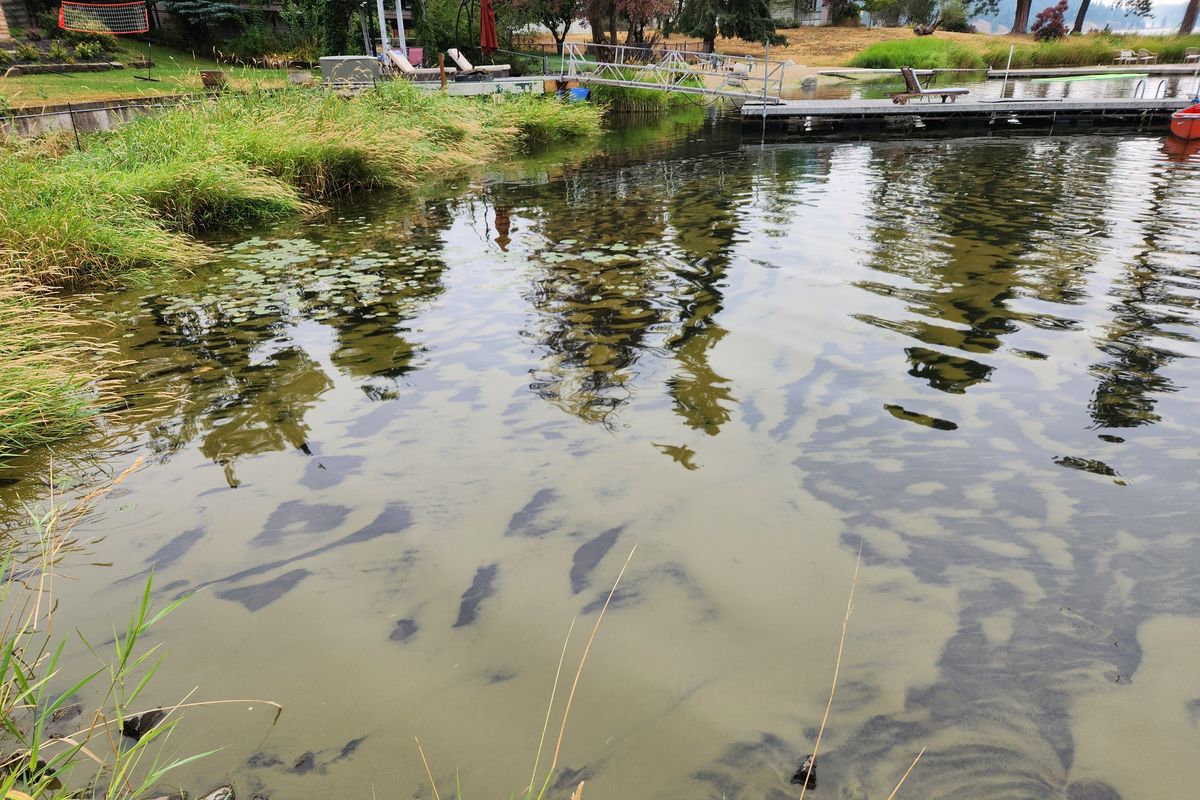Harmful algae alert issued for Fernan and Avondale lakes

North Idaho officials issued a harmful algal bloom alert on Monday for Fernan and Avondale lakes, advising people to be cautious in or near the water.
The Panhandle Health District said recent water sampling indicates the presence of toxic cyanobacteria – previously called blue-green algae – throughout both lakes and along the shorelines.
People should avoid swimming or water sports where such blooms are present, the state Division of Public Health said. The blooms typically last days to weeks before dying off naturally and disappearing.
Symptoms of exposure to algae toxins can include rashes, hives, diarrhea, vomiting, coughing or wheezing. More severe symptoms involving the liver and nervous system can come from drinking the water. It can be particularly harmful to dogs.
There was no reported illness among people or animals as of Tuesday, the health district said.
If eating fish from the lakes, the district suggested removal of all fat, skin and organs before cooking, since toxins are more likely to collect in those tissues.
Toxins can’t be removed by boiling or filtering the water, the district warned private domestic water system owners who use the lake for drinking water. If any contact on the skin comes from being in bloom areas of the lakes, the district recommends washing off with fresh water.
The Idaho Department of Environmental Quality will continue doing water quality monitoring at the sites. The state regularly tests Fernan Lake, and while it’s had many starts of a bloom, this one that is potentially harmful to people or pets occurred just recently, said Bob Steed, surface water manager.
Avondale last bloomed in 2015, he said.
Algal blooms can be blue, bright green, brown or red and may look like paint, foam, scum or mats on the surface of freshwater lakes and ponds.
While they’re becoming increasingly common in bodies of water, there are many types of blooms, and they’re not always toxic. Sunny days combined with high nitrogen, phosphorus and potassium levels in the water are the recipe for a bloom.
As of Tuesday morning, Washington state didn’t have any reports of algae toxins. It updates at the Washington State Toxic Algae website: www.nwtoxicalgae.org.
For more about Idaho’s harmful algal bloom updates, visit: www.gethealthy.dhw.idaho.gov/recreational-water-health-advisories.